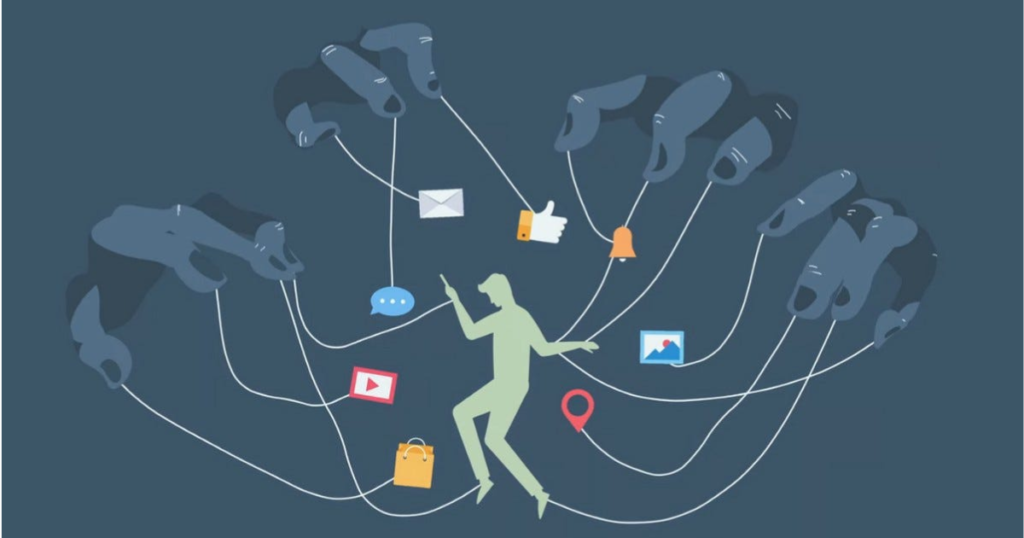Introduction
In the digital age, social media has become an inseparable part of our lives. Platforms like Facebook, Instagram, Twitter, and TikTok keep us engaged for hours, sometimes without us even realizing it. But have you ever wondered why it’s so hard to put your phone down? The truth is, social media companies have carefully designed their platforms to capture and hold our attention for as long as possible. This article explores the psychology behind social media addiction and how tech companies manipulate our attention.
The Science of Social Media Addiction
Social media addiction is a behavioral addiction characterized by excessive and compulsive use of social networking sites. It affects the brain in ways similar to gambling and drug addiction. Here’s how:
- Dopamine Release: Every like, comment, or notification triggers a small release of dopamine, a neurotransmitter associated with pleasure and reward. This encourages users to keep coming back.
- Variable Reward System: Social media platforms use unpredictable rewards—sometimes a post gets hundreds of likes, other times very few. This uncertainty keeps users engaged, much like a slot machine.
- Endless Scrolling: The infinite scroll feature ensures there’s always something new to see, making it difficult to stop.
- Fear of Missing Out (FOMO): Seeing others’ highlights and achievements creates anxiety about missing out, pushing users to check their feeds constantly.
- Social Comparison: Users often compare their lives to the curated highlights of others, leading to feelings of inadequacy and dissatisfaction.
How Tech Companies Keep Us Hooked
Tech giants employ various strategies to maximize user engagement. These include:
1. Personalized Algorithms
Social media platforms analyze user behavior to tailor content, ensuring users stay engaged for longer periods. The more time spent on a platform, the more ads they see, increasing revenue.
2. Push Notifications
Notifications are designed to interrupt daily activities and draw users back to the app. They create a sense of urgency, making it difficult to ignore them. Some notifications are even generated automatically to re-engage users, regardless of whether they were necessary.
3. Endless Content Consumption
Features like autoplay videos, infinite scroll, and recommended posts make it easy to consume content passively without realizing how much time has passed. The lack of a natural stopping point encourages prolonged engagement.
4. Gamification and Streaks
Platforms like Snapchat use streaks to encourage daily usage, creating psychological pressure to maintain them. Similarly, reward-based interactions such as badges, achievements, and daily engagement bonuses keep users invested.
5. Social Validation and Approval
Likes, shares, and comments act as social validation, reinforcing the need for continued engagement. Algorithms prioritize content that triggers emotional responses, increasing user interactions.
6. Psychological Triggers
Tech companies leverage cognitive biases, such as the Zeigarnik effect (people remember unfinished tasks more than completed ones) and reciprocity (feeling obligated to respond to engagement), to keep users coming back.

The Impact of Social Media Addiction
Excessive social media use has various negative consequences, including:
- Mental Health Issues: Increased rates of anxiety, depression, and low self-esteem, particularly among teenagers. Prolonged use can lead to social isolation and loneliness.
- Reduced Productivity: Constant distractions hinder focus and efficiency in work or studies. Many employees and students struggle with decreased concentration due to excessive screen time.
- Sleep Disruptions: The blue light from screens and late-night scrolling interfere with sleep cycles, leading to fatigue and reduced cognitive function.
- Weakened Real-Life Relationships: More time online can lead to less meaningful face-to-face interactions. Family members and friends may feel neglected when competing with digital engagement.
- Increased Risk of Cyberbullying: The anonymity of social media allows for negative interactions, including harassment, bullying, and trolling, which can have severe psychological impacts.
- Loss of Autonomy: Many users feel a loss of control over their time and emotions, as social media addiction can create compulsive behaviors that interfere with daily life.
Breaking Free from Social Media Addiction
Overcoming social media addiction requires conscious effort. Here are some practical steps:
- Set Time Limits: Use apps that track screen time and set daily limits on social media usage. Many smartphones offer built-in digital well-being tools for self-regulation.
- Turn Off Notifications: Reducing notifications minimizes distractions and compulsive checking. Consider disabling non-essential alerts to avoid constant interruptions.
- Unfollow Unnecessary Accounts: Curate your feed to avoid excessive content consumption. Prioritize content that adds value and promotes positivity.
- Engage in Offline Activities: Replace social media time with hobbies, exercise, reading, or in-person interactions to reduce digital dependence.
- Use Digital Well-Being Tools: Features like grayscale mode, app blockers, and scheduling screen-free time can help minimize usage.
- Practice Mindful Consumption: Be intentional about when and why you use social media. Instead of mindless scrolling, use it for meaningful interactions and connections.
- Take Social Media Detoxes: Periodic breaks from social media, whether for a day or a week, can help reset habits and improve mental clarity.
Conclusion
Social media platforms are engineered to keep users engaged, often at the cost of their well-being. Understanding the psychological tricks used by tech companies is the first step in regaining control over our time and attention. By setting boundaries and adopting mindful usage habits, we can enjoy social media without falling into the trap of addiction. Ultimately, balancing digital life with real-world experiences is key to maintaining mental health and personal growth.